When most people hear the words “employer brand,” they immediately think about a brand’s culture. While your culture isn’t the only component of your employer brand, it is undoubtedly one of the biggest reasons why people join—and stay with—a company.
In fact, according to 2019 Glassdoor data, a company’s culture and values are the largest predictor of employee satisfaction, far outranking compensation and benefits.
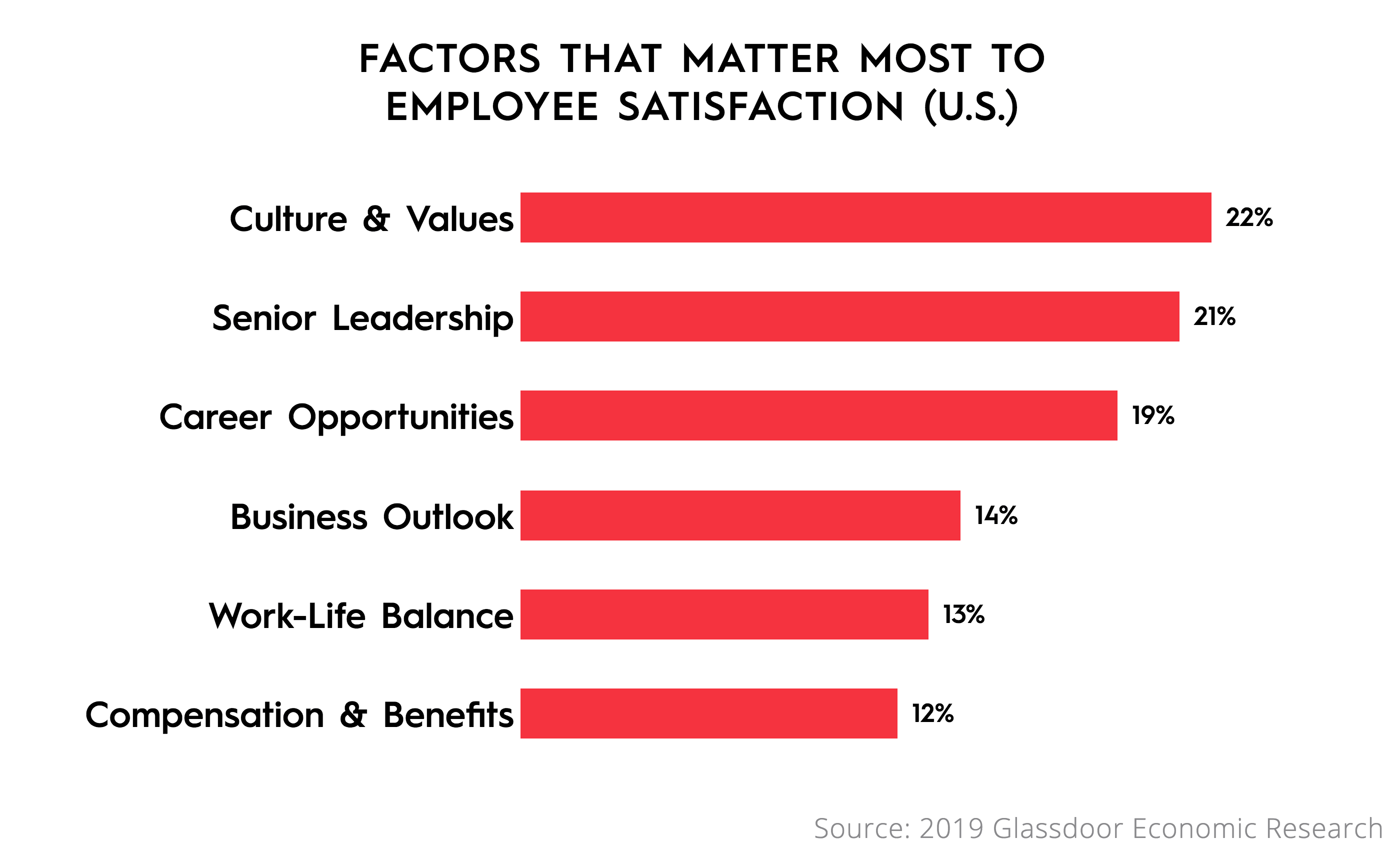
But culture is tricky. Culture is inherent in every brand, influencing every part of your organization. But because it’s inherent, you can’t manufacture it or pretend it’s something it’s not. This is where many brands go wrong. They try to project an image of who they want to be (or think they are), but when their behavior contradicts that image, they end up in trouble.
So, then, if you can’t snap your fingers and create the company culture you want, how do you change it? By looking for ways to nurture and nudge it to grow in the right direction.
Here, we’ll cover some ways to do just that, along with the tools that make it easier. If you’re ready to build a better place for all of your employees to work, you’re ready to dive in.
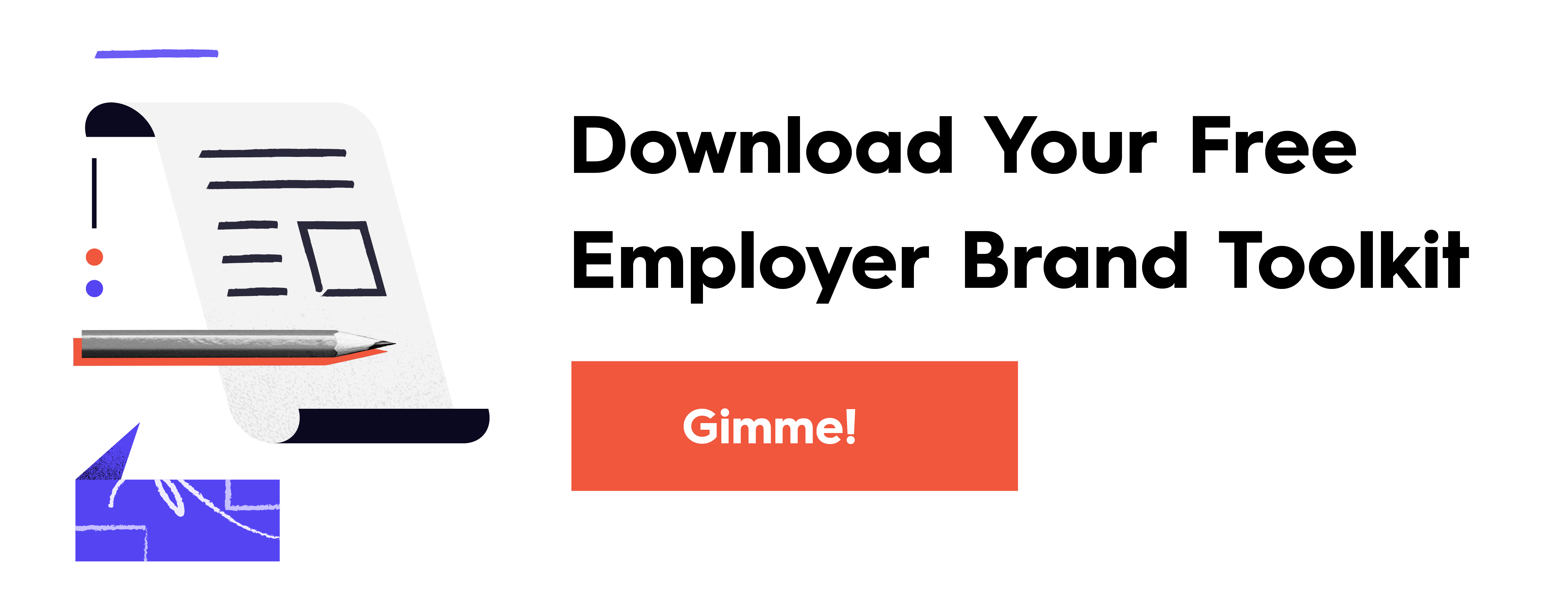
What Is Company Culture?
There are a million definitions of a brand’s culture. We believe in simplicity, so we favor the definition put forth by branding expert Marty Neumeier in The Dictionary of Brand: Culture is “the shared understanding and behavioral norms of a community or population.”
It’s basically how the people behind your brand act, speak, think, and lead together.
Why Does Company Culture Matter?
The employer-employee dynamic has changed drastically. While it was once a strictly transactional relationship (employees work, employers pay them), economic and social changes have shifted people’s expectations about work. People want more than a paycheck. They want to enjoy work-life integration, do meaningful work, and commit to companies that share their vision. Culture plays a huge part in these desires.
The stronger your culture, the easier it will be to attract like-minded people and make them want to stay for the long run.
Culture can also be a significant competitive advantage. [bctt tweet=”Even if you can’t compete on, say, compensation, you can create a culture that is more alluring than your competitors’ and thus attract the talent you need to grow your brand.”]
CULTURE = COMPETITIVE EDGE
Don’t forget that customers care about your culture, too. After witnessing too much bad behavior by faceless corporations, they want to align themselves with brands they feel are worthy.
A 2020 Morning Consult report found that 90% of consumers feel it’s important for brands to take care of their employees and treat them well, even in tough times.
Ultimately, people care about what’s happening inside a company as much as they care about the product or service it provides. Now that review sites like Glassdoor make it easier for employees to expose bad behavior, investing in your culture can help you retain both employees and customers.
That said, investing in your culture shouldn’t be a fear-based move. It should be a thoughtful, intentional, and joyful effort to bring people together, improve the way you work, and celebrate a shared vision.
How to Build Your Company Culture
Revamping your culture doesn’t happen all at once. Bringing your employer brand into alignment is a process that happens over time. There may even be missteps here and there, but if you can cultivate a strong foundation and take proactive steps to enhance your culture pillar by pillar, you can build a better and stronger brand from the inside out. Here’s how to do it.
Step 1: Articulate Your Brand Heart
Some people consider your Brand Heart one of the core pillars of a company culture. But it isn’t a pillar at all. It’s the foundation upon which all of the other pillars of your culture stand.
A Brand Heart is comprised of four key elements:
- Purpose: Why do you exist?
- Vision: What future do you want to help create? What does the future look like?
- Mission: What are you here to do? How do you create that future?
- Values: What principles guide your behavior?
These core elements create a blueprint for your brand’s choices and behavior, helping you align every aspect of your business, customer brand, and employer brand. It’s a powerful force that keeps your culture strong and helps you navigate challenging situations (like, say, a pandemic). When you know your Brand Heart, you can respond instead of react and make the best moves for your people and your future.
Thus, when it comes to building a better culture, your Brand Heart is the most vital piece. Once you identify and articulate your core principles, you can look at your culture through its lens and find opportunities to make good on your values.
How to Do It
Download our free Brand Heart workbook and use our simple guide to articulate and document your Brand Heart.
Step 2: Conduct an Employer Brand Audit
Oftentimes when you’re so immersed in your brand, it’s hard to get an objective perspective about how your employees (or even prospective employees) perceive and experience your brand culture.
An employer brand audit lets you solicit feedback from prospective candidates, current employees, and alumni to get an honest look at your employer brand and, by default, culture. While it isn’t always pleasant; it’s the only way to understand your current strengths and weaknesses, and how you can use your Brand Heart to address them.
How to Do It
Follow our step-by-step guide to conduct a brand audit.
Step 3: Map Your Employee Journey
Your current employees are the ones who are most immersed in your company culture, but they aren’t the only ones who experience it. People get a sense of your culture at every stage of the hiring process.
Understanding what this lifecycle looks like, what the touchpoints are, what messages people are getting, and how those do or don’t communicate your culture is a helpful perspective to have as you start this work.
How to Do It
Use our free template to identify your employee journey. As you move into the next stage, you can use these insights to make sure every touchpoint reflects your culture.
Step 4: Examine the 4 Culture Pillars
Now that you’ve done that important legwork, you can start to assess the four main pillars of your culture and how those do or don’t reflect your Brand Heart.
The 4 Pillars of Culture:
- Benefits + Perks (Compensation)
- Learning (Communication)
- Community (Socialization)
- Environment (Physical Space)
One of the biggest misconceptions about this work is that your culture only lies in the big things—the benefits package, the swanky holiday party, etc. But your company culture is just as present in the small things.
For example, if inclusion is one of your core beliefs, do you offer all-gender bathrooms? Does your application process accommodate prospective candidates who may be disabled? Identifying these types of blind spots or opportunities is the key to creating a stronger culture.
As you examine each pillar, practice empathy and put yourself in your employees’ shoes:
- How do your employees experience each pillar?
- What do they need to feel physically and emotionally supported?
- How might they perceive your beliefs vs. your actions?
- What messages are they getting about your culture?
Remember it’s not about what you’re trying to do; it’s about how it will be perceived.
Pillar 1: Benefits + Perks (Compensation)
The way people are compensated plays a huge role in building a strong, healthy company culture. Someone may be lured by a great salary, but they will stay if they feel cared for.
Of course, this can be a sore spot for smaller brands, especially startups that can’t match the salaries of larger competitors. Still, there are many ways to provide perks that reflect your culture without breaking your budget.
Look at this pillar through the lens of your purpose, vision, mission, and values. What types of perks might reflect your core principles?
How to Do It
One helpful way to frame this conversation is to think about what types of benefits might care for the whole employee—meaning mind, body, and soul.
- Invest in physical health. When employees feel well, they are happier, more energized, more engaged, and more likely to make better choices for your business. Consider free or subsidized mediation, gym passes, healthy meals or snacks, yoga, etc.
- Support personal growth. You want to work with well-rounded people who have passions, interests, and the desire to be their personal best. (You also want to attract those types of people.) Education budgets, referral bonuses, skill training, or travel allowances are a smart way to show people you support their personal growth.
- Focus on purpose. This is where you can really bring your values to life. Think about ways to reward employees who contribute their skills or time toward your company purpose. Giving paid time off to pursue social justice activities, greenlighting passion projects, or allowing people to do pro bono work are simple ways to do that.
For more ideas, see Austin Benefits Group’s roundup of 101 creative perks.
One of Patagonia’s core values is “Not Bound by Convention.” Unlike the majority of companies, since 1983, the brand has offered on-site childcare, providing an uninhibited space for kids to grow and explore while parents work to create better products that are safer for the planet.
Pillar 2: Learning (Communication)
A learning organization, as defined by organizational theory expert Peter Senge in The Fifth Discipline is a place “where people continually expand their capacity to create the results they truly desire, where new and expansive patterns of thinking are nurtured, where collective aspiration is set free, and where people are continually learning how to learn together.”
In short, it’s the type of organization that is committed to helping people work smarter, communicate effectively, and think more creatively. But none of these things can happen without a culture that actively supports these goals.
How to Do It
Think about the many ways you can cultivate an engaged culture of learning, from attracting the right kind of people and creating space for expression to learning to identify different work styles.
- Write an Employer Value Proposition. This can help you identify the core things that make your workplace special and help you hire the people who will not just fit your culture but add to it. You may also want to brainstorm your key hiring factors (e.g., the traits you want in every single hire).
- Examine your diversity and inclusion practices. The way you do or don’t work toward equality speaks volumes about your brand. With the advent of the Black Lives Matter movement, it’s crucial to examine your efforts to battle racism, sexism, homophobia, ageism, etc. ERGs (employee resource groups) can be one powerful way to create community and elevate minority voices in your organization.
- Re-examine how you give and receive feedback. Whether it’s performance reviews, employee satisfaction surveys, or communication up and down the chain of command, a strong culture requires healthy communication. Tools like contextual expectations, job canvas documents, or OKRs can be helpful to clarify expectations around career growth and help employees understand how they’re contributing to the company’s larger vision. This makes communication much more effective.
- Create regular learning opportunities. You can easily break down silos and help everyone grow with knowledge-sharing sessions. Bring in an expert to coach a specific department, invite interesting speakers into your workplace, or encourage teams to share helpful things they’ve learned with the whole company. (For example, when our team learned about the different types of creative thinkers and how they each contribute to a group, it changed brainstorm dynamics for the better.)
- Cultivate psychological safety. Any healthy relationship is built on trust. If you want an open culture that encourages people to try new things and innovate (which pretty much every brand does), you have to make space for it without punishment or expectation. Vulnerability, mistakes, failure—these are human things, so cultivate an environment that allows people to feel safe in these. Remember, the more people can experiment, the more they learn. Even if you “fail,” you can always turn your failures into lessons that help others.
Zendesk is passionate about its Diversity & Inclusion initiatives, and discusses them in detail on the company site. They publicly share their data on employee representation by age, gender, and ethnicity, as well information about their unconscious bias training, mentorship programs, and ERGs for POC, LGBTQ, and female employees. This level of transparency speaks volumes about their culture.
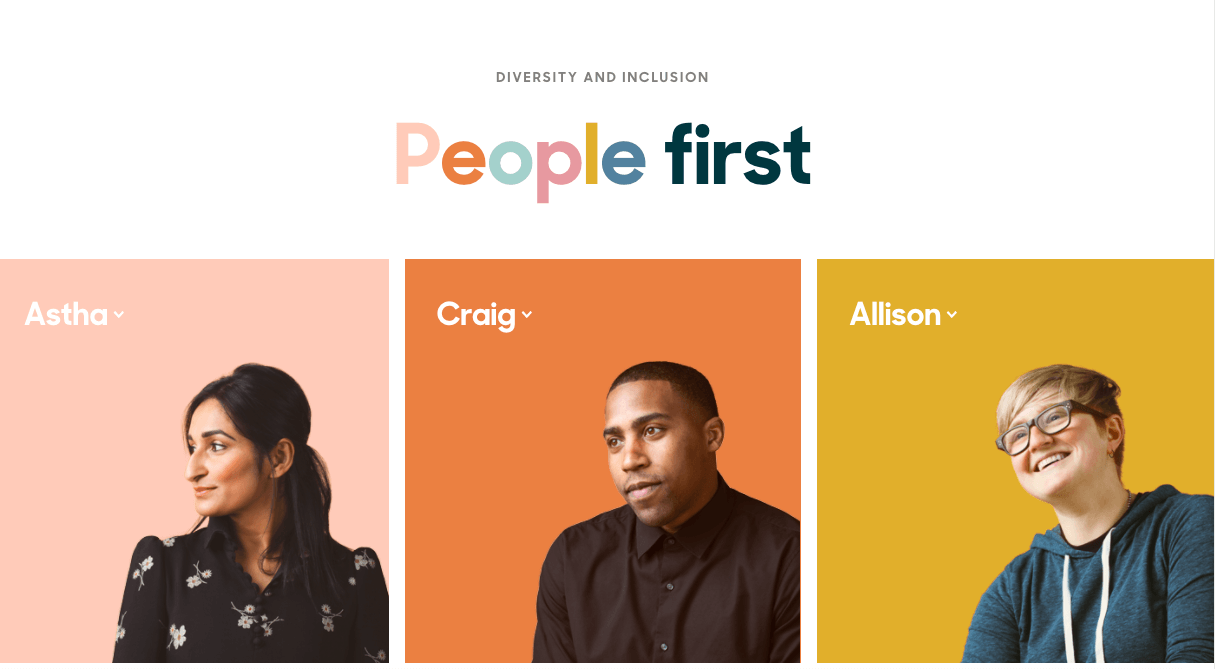
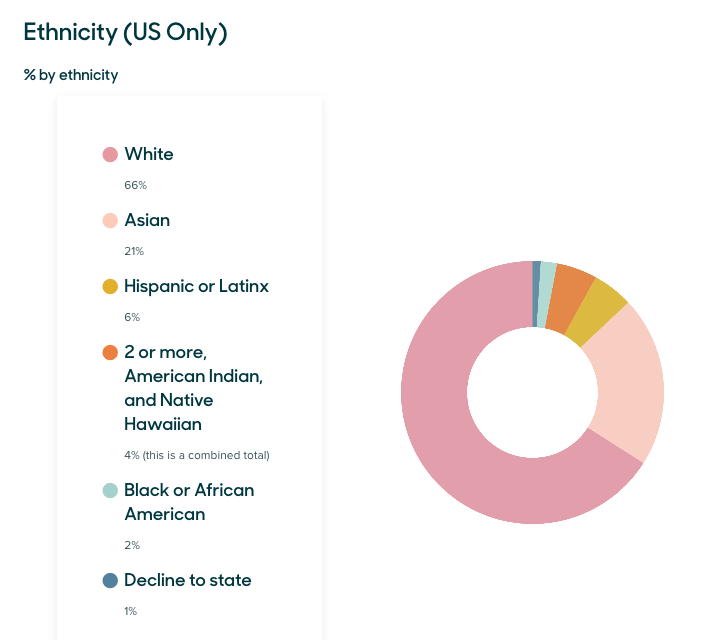
Something to Think About
[bctt tweet=”As you work toward shifting your culture, be cognizant that every action has a reaction that may adversely affect your culture.”] For example, if you introduce employee awards to acknowledge achievement, you may inadvertently hurt the morale of the majority of employees who don’t receive those awards. For this reason, vet every idea for pros and cons (and don’t forget about your blindspots).
At Column Five, when we found ourselves repeatedly facing the same challenges in production, we shut down for a week and brought in AgencyAgile to completely overhaul the way we work. It was a huge time investment, but we felt it would be worth it in the long run. We were right.
By being open enough to reimagine our production process, we have drastically improved our work. If we didn’t have top-down buy-in and a culture of experimentation, it would have never happened.
Pillar 3: Community (Socialization)
Culture isn’t just happy hours and hack days, but there’s no denying that social interactions are one of the most effective ways to cultivate a connected company culture. This isn’t just a frivolous investment, however; now that more companies are going remote, maintaining that sense of joy and connection across a distributed workforce is more imperative than ever.
How to Do It
You can build community in both big and small ways if you take a creative approach.
- Celebrate life events. There are all sorts of opportunities to celebrate your employees beyond the standard birthday lunch. Marriages, work-i-versaries, babies, new apartments, graduation ceremonies, new side hustles—these are all opportunities to acknowledge major milestones in people’s lives.
- Get out of the office. A change of location is a great way to get people out of the office physically and mentally. A boat ride, soccer game, ping-pong championship, or field trip can let people bond without the pressures of work.
- Volunteer together. Uniting people around a shared vision is a great way to build and maintain morale. Look for opportunities for group volunteer work, or let people donate their time, knowledge, or energy to things like charity runs, fundraisers, or organizations.
- Keep remote teams connected. COVID-19 has forced many brands to switch to a remote workforce, risking disconnection and disengagement. Even if you can’t physically be together, little rituals (like a Friday afternoon check-in) or things like virtual karaoke, trivia, or happy hours can help maintain a sense of normalcy. (Here are 57 more ways to team-build with a remote workforce.)
- Create interest groups. We have Slack channels for all sorts of interests, including parenting, political activism, food, animals, etc. These channels give us an excuse to engage with each other, share interesting info, or take a break from daily drudgery. They’ve even inspired some of our marketing content. (See our team’s tips for working parents and remote workers.)
For more ideas, here are 10 ways our team builds bonds.
Inspired by one of our core values (Be Good to Each Other), our team was eager to find a way to bring creatives together for a good cause. This desire became When You Think of Home, a project where artists around the world create unique art posters that benefit the nonprofit Acres of Love. This was an exciting way to follow through to combine our passion for design with our desire to create community—all for a good cause.
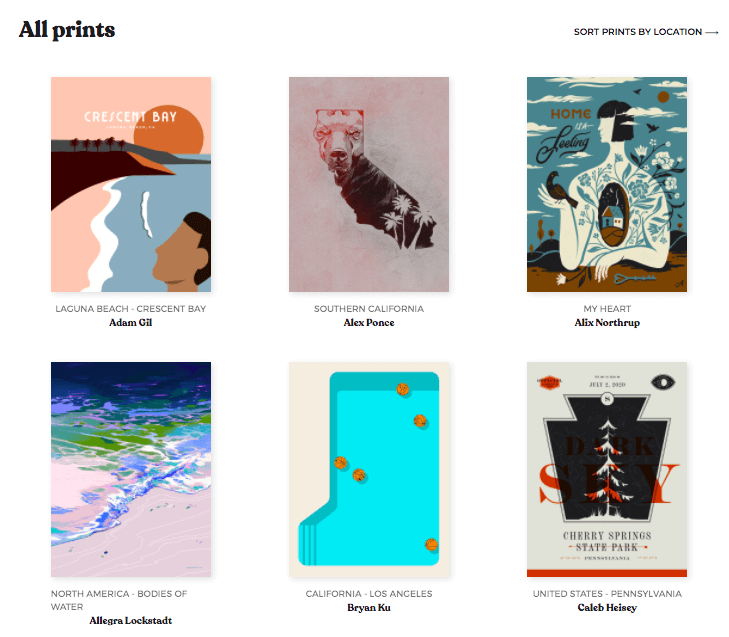
Pillar 4: Environment (Physical Space)
Whether or not you realize it, your workplace environment can reflect or contradict your culture in significant ways. For example, if you promote transparency and collaboration but your leadership lives in private offices, whispering behind closed doors, your culture is not aligned to your practices.
No matter where your team is—a company office, a shared workspace, or their own home—think about how you can empower and support them in their physical environment.
How to Do It
- Invest in the right equipment and tools. You can’t expect people to do their jobs without the tools they need to do them. Ergonomic equipment and training is also an important component of a healthy environment.
- Consider your layout. There have been plenty of arguments for and against an open layout office, but you don’t necessarily have to start massive renovations. What matters most is that your space reflects people’s needs. Think of people’s personalities (introverts vs. extroverts), how people use the space, and how elements like light and greenery can create a more inviting atmosphere.
When we made our last office move, we decided to reassess the way we work and design a space based on the Eudaimonia Machine, a unique floor plan designed to optimize human capability. Changing our space helped us maximize our creativity, accommodate employees with different work styles, and change the way we physically interact with each other.

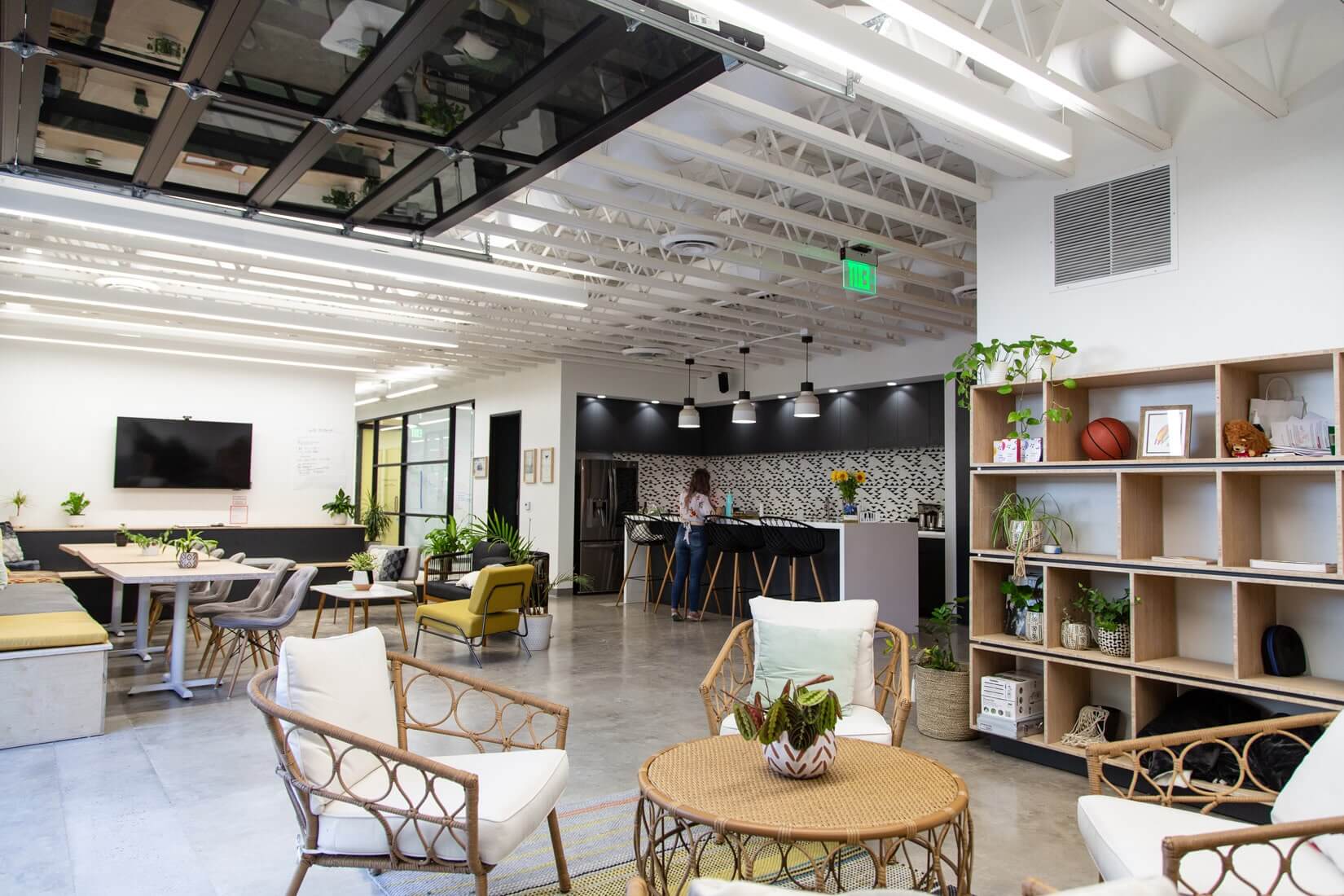
How to Keep Your Company Culture Alive
One of the best litmus tests of a strong culture is your willingness to share it with the outside world. For that reason, as your culture continues to grow and evolve, we encourage you to spotlight it through content.
This is an easy way to showcase your employees, give people a peek behind the curtain, and bring your brand to life outside your walls.
For more ways to do that…
- Share your brand’s origin story to show people how it all started.
- Get inspired by how these 10 brands share their values.
- See our Culture Marketing 101 guide.
Of course, we know that this work isn’t always easy. If you need a little guidance to help you course-correct, or some fresh ideas to energize your employees, we’re happy to help. Just holler at us.





